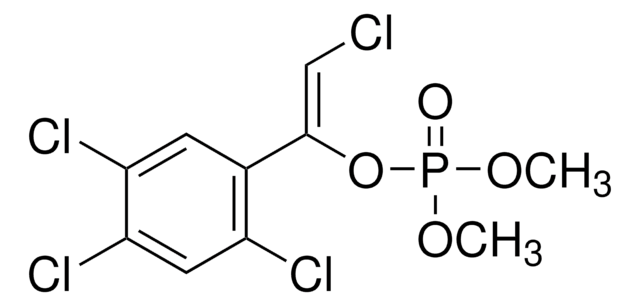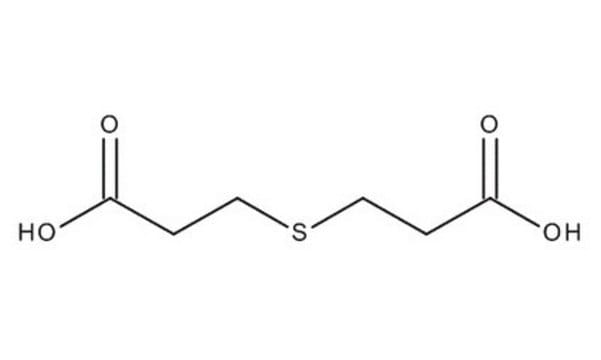36197
Phoxim
PESTANAL®, analytical standard
About This Item
Productos recomendados
grade
analytical standard
Quality Level
product line
PESTANAL®
shelf life
limited shelf life, expiry date on the label
technique(s)
HPLC: suitable
gas chromatography (GC): suitable
application(s)
agriculture
environmental
format
neat
storage temp.
2-8°C
SMILES string
CCOP(=S)(OCC)O\N=C(/C#N)c1ccccc1
InChI
1S/C12H15N2O3PS/c1-3-15-18(19,16-4-2)17-14-12(10-13)11-8-6-5-7-9-11/h5-9H,3-4H2,1-2H3/b14-12+
InChI key
ATROHALUCMTWTB-WYMLVPIESA-N
¿Está buscando productos similares? Visita Guía de comparación de productos
General description
Application
- Honeys, honeybees and pollens and food samples by QuEChERS extraction followed by analysis using liquid chromatography-electrospray ionization-tandem mass spectrometry (LC-ESI-LC-MS/MS) combined with multiple reaction monitoring (MRM) detection.
- Egg samples by acetonitrile-based extraction and high performance liquid chromatography-diode array detection (HPLC-DAD).
- Environmental samples by temperature-controlled ionic liquid dispersive liquid-phase extraction and HPLC combined with ultraviolet (UV) detection.
Other Notes
Legal Information
signalword
Danger
Hazard Classifications
Acute Tox. 2 Inhalation - Acute Tox. 3 Dermal - Acute Tox. 3 Oral - Aquatic Acute 1 - Aquatic Chronic 1 - Repr. 2 - Skin Sens. 1
Storage Class
6.1A - Combustible acute toxic Cat. 1 and 2 / very toxic hazardous materials
wgk_germany
WGK 3
flash_point_f
Not applicable
flash_point_c
Not applicable
ppe
Eyeshields, Faceshields, Gloves, type ABEK (EN14387) respirator filter
Elija entre una de las versiones más recientes:
¿Ya tiene este producto?
Encuentre la documentación para los productos que ha comprado recientemente en la Biblioteca de documentos.
Los clientes también vieron
Nuestro equipo de científicos tiene experiencia en todas las áreas de investigación: Ciencias de la vida, Ciencia de los materiales, Síntesis química, Cromatografía, Analítica y muchas otras.
Póngase en contacto con el Servicio técnico












